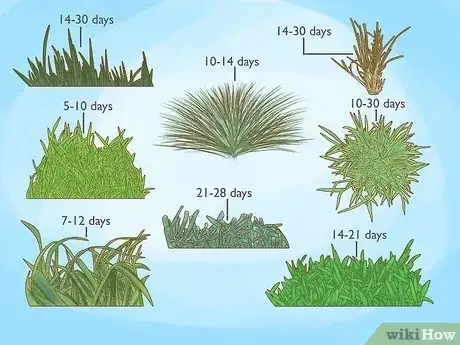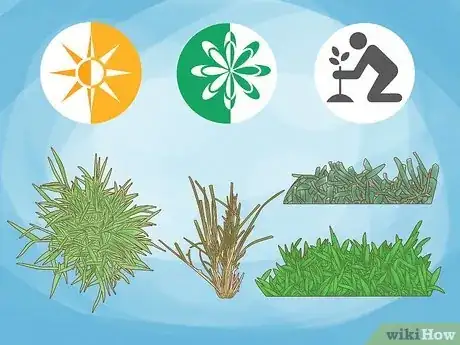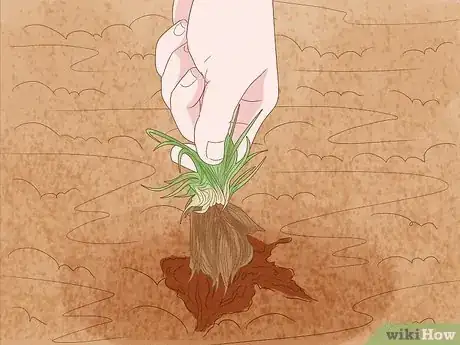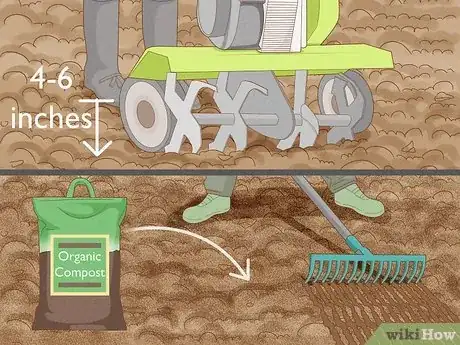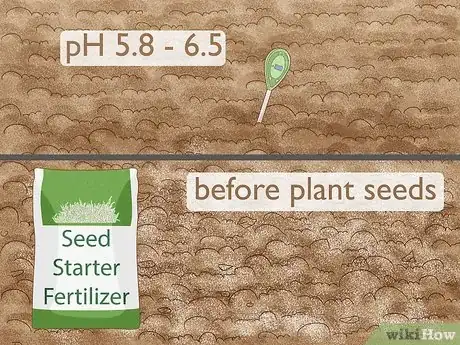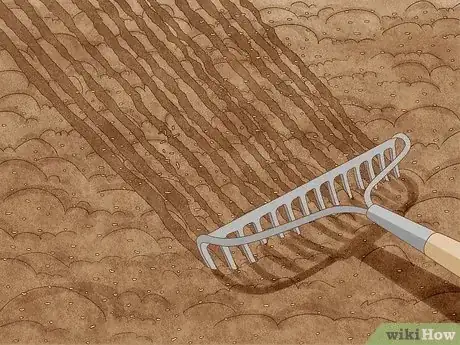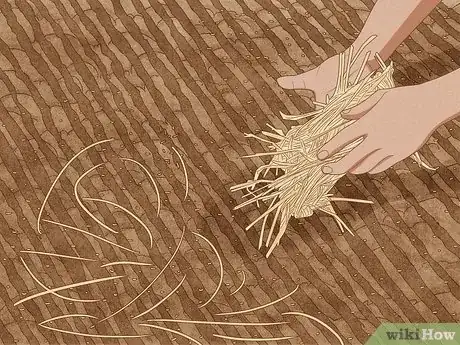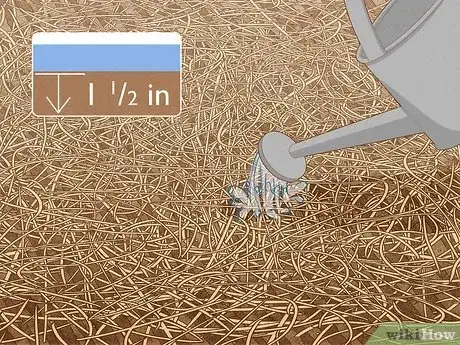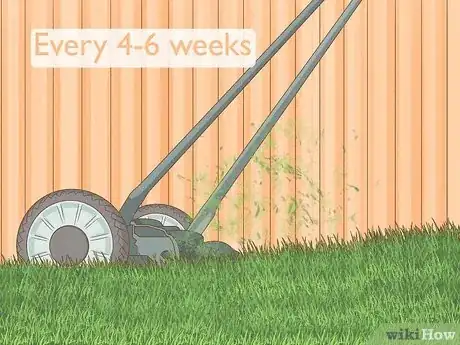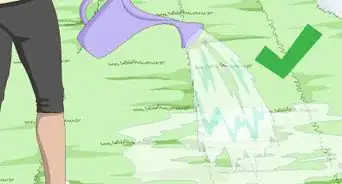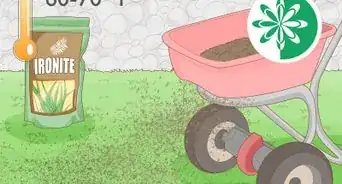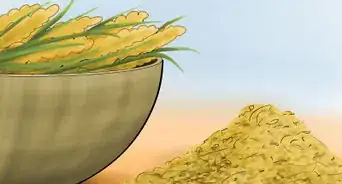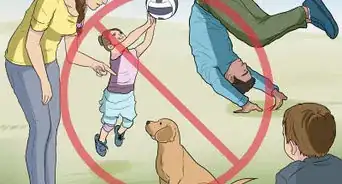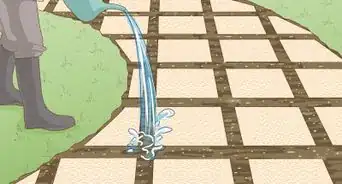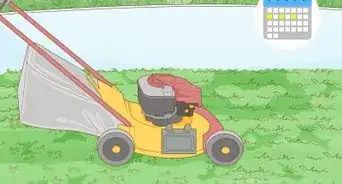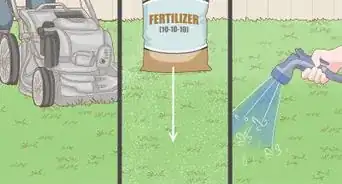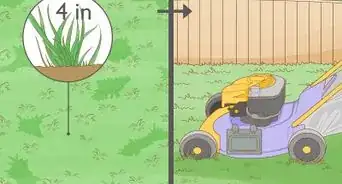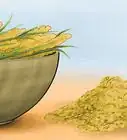This article was written by Benjamin Hansen and by wikiHow staff writer, Hunter Rising. Benjamin Hansen is a Landscape Contractor and the Owner of Artscape Gardens, a boutique landscaping company in Los Angeles, California. With over 12 years of experience, Benjamin specializes in transforming properties into aesthetic, functional, and drought-tolerant oases. Benjamin uses color scheme, dimension, and water conscious spaces to inspire the design and installation of soft scape, hardscape, patios, pathways, irrigation, drainage, fencing, concrete, lighting, and electrical work. Artscape Gardens covers all areas of the C-27 landscape contractor classification.
There are 12 references cited in this article, which can be found at the bottom of the page.
You want a thick and lush lawn, but when will the new grass seed you planted grow in? Even though it doesn’t take very long for grass seed to germinate, times may vary depending on the species and the growing conditions. Luckily, it’s pretty easy to take care of new grass and establish a healthy lawn. We’ll cover when you can expect to see sprouts and how you can support new grass seeds to grow strong.
This article is based on an interview with our licensed landscape contractor, Benjamin Hansen, owner of Artscape Gardens. Check out the full interview here.
Things You Should Know
- Expect grass to sprout anywhere between 5–30 days after planting the seeds.
- Plant cool-season grasses in the fall and warm-season grasses in the spring for the strongest growth.
- Keep the soil moist and weed-free after sowing grass seeds to help the roots establish.
Steps
Improving Growing Conditions
-
1Get rid of weeds growing in your lawn. Before you plant your grass seed, apply a pre-emergent herbicide that’s labeled for newly seeded lawns to prevent weeds from growing in. If you see weeds sprouting up in the soil while your grass is germinating, then pull them by hand to remove the roots.[6]
- Weeds compete for nutrients in the soil and may prevent your grass from growing in.
- Avoid using a broadleaf herbicide when you’re growing grass seed since it also affects the new growths. Pull broadleaf weeds by hand so you can get rid of them without killing your grass.
-
2Amend your soil with compost. Till your soil to a depth of 4–6 inches (10–15 cm), and then apply a 1–2 in (2.5–5.1 centimetres) layer of compost on top. Rake the compost to mix it in with the soil.[7]
- Adding compost helps loosen up tightly-packed soil and helps it retain moisture to help your grass seeds grow.
-
3Fertilize your grass seed to provide nutrients. Run a soil test to check the pH and nutrient levels in your soil to see what your lawn needs. Apply a seed starter fertilizer to the soil right before you plant your grass seeds to help them germinate faster. Use either a granular or liquid fertilizer, following the package instructions based on the nutrient levels of your soil.[8]
- About 4 weeks after your grass sprouts, spread a slow-release, high-nitrogen mix over your lawn so your new grass gets more nutrients as it establishes.
- After your lawn is established, apply fertilizer in the spring and fall each year.
- Most grasses thrive when soil has a pH between 58 and 6.5.[9]
-
4Rake and roll seeds into the soil after spreading them. After you sow your grass seed, lightly drag a rake across the soil to bury the seeds underground. Afterward, pull a lawn roller over the soil to lightly compact the soil so it makes good contact with the seeds.[10]
- If you’re planting grass seed over a large area, use a rototiller and roller that attach to a riding lawnmower or tractor to make the job easier.
-
5Apply straw mulch over your grass seed. Pick a clean wheat, oat, or barley straw since they’re less likely to contain weed seeds. Spread the mulch in a thin layer so you can still see the soil surface through it.[11]
- Mulch helps the soil retain moisture and prevents weeds from growing.
- If you planted seeds in the fall, leave the mulch on through the winter to keep your grass from dying.
-
6Water the top 1 1⁄2 in (3.8 cm) of soil regularly to keep it moist. Stick your finger into the soil to see if it feels moist. If the soil feels dry or crumbles easily between your fingers, use a sprinkler or watering can to lightly water it. You may need to water them 2–3 times a day before they sprout depending on how fast your soil dries out. As your grass grows in and establishes, only water about once a week to a depth of 6–8 inches (15–20 cm).[12]
- Reduce how often you water when it’s rainy, cool, or overcast since the soil will stay moist for longer.
-
7Wait 4–6 weeks after planting to mow new grass. New grass sprouts are sensitive to mowing since the damage can prevent them from growing. Wait until your grass is about ⅓ taller than the height you want to maintain before you mow. Then, only remove a third of the foliage so you don’t stress your new grass.[13]
Warnings
- Avoid walking on new grass growth for at least 1 month after the seeds have germinated so you don’t damage it.[15]⧼thumbs_response⧽
References
- ↑ https://ipm.ucanr.edu/TOOLS/TURF/ESTABLISH/germin.html
- ↑ https://content.ces.ncsu.edu/centipedegrass-lawn-maintenance-calendar
- ↑ https://edis.ifas.ufl.edu/publication/LH011
- ↑ https://njaes.rutgers.edu/fs584/
- ↑ https://content.ces.ncsu.edu/carolina-lawns
- ↑ https://content.ces.ncsu.edu/carolina-lawns
- ↑ https://extension.umd.edu/resource/starting-new-lawn
- ↑ https://www.johnson.k-state.edu/lawn-garden/agent-articles/lawns/seeding-grass-spring.html
- ↑ https://hgic.clemson.edu/factsheet/changing-the-ph-of-your-soil/
- ↑ https://extension.psu.edu/lawn-establishment
- ↑ https://www.canr.msu.edu/resources/establishing_a_new_lawn_using_seed_e2910
- ↑ https://content.ces.ncsu.edu/carolina-lawns
- ↑ https://extension.umd.edu/resource/care-and-maintenance-lawn-after-seeding
- ↑ https://extension.umd.edu/resource/starting-new-lawn
- ↑ https://extension.umd.edu/resource/care-and-maintenance-lawn-after-seeding
